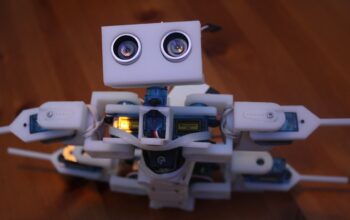From Blueprint to Factory Floor: How Manufacturers Are Making Digital Work
Picture a factory where machines predict their own maintenance, customers troubleshoot issues via self-service portals, and AI redesigns parts overnight. This isn’t science fiction—it’s 2025’s manufacturing reality. After years of planning, companies are rolling up their sleeves to turn digital dreams into shop-floor results.
1. Customer Portals Take Center Stage Nearly every manufacturer surveyed by Copperberg and Valtech now invests in digital self-service platforms. These portals let clients track orders, monitor equipment performance, and even schedule maintenance—think “Netflix for industrial machines.” One unnamed aerospace supplier reduced service calls by 30% after introducing AI-powered troubleshooting guides. The bonus? These platforms collect real-time user data to fuel future upgrades.
2. AI Gets Practical Generative AI isn’t just for chatbots. Automotive giants now use it to design lighter car parts with fewer materials, while factories deploy AI “copilots” to predict supply chain snags. “It’s about selling business outcomes, not just widgets,” explains a recent industry report. At Chicago Innovation Days 2025, DMG MORI showcased AI-driven machining tools that adjust cutting paths in real-time, slicing production errors by up to 15%.
3. The Servitization Revolution Why sell a machine once when you can monetize it continuously? Manufacturers now bundle products with subscription-based digital services. Imagine buying a 3D printer that comes with automated material ordering and remote technician access. This shift mirrors how software companies operate, creating predictable revenue streams while deepening client relationships.
4. Upgrading the DNA Digital transformation’s biggest hurdle isn’t technology—it’s culture. Leading firms now embed digital leads in every department, from procurement to frontline maintenance. As one Valtech expert puts it: “Winners treat digital not as a side project, but as their central nervous system.”
5. The Green-Tech Bonus Track Climate goals accelerate digital adoption. Predictive maintenance reduces energy waste, while AI-optimized delivery routes trim carbon footprints. At Chicago Innovation Days, DMG MORI’s “Green Transformation” wing demonstrated how IoT sensors help factories cut power usage during off-peak hours—proving sustainability and profitability aren’t mutually exclusive.
What’s Next? Companies that master this digital tightrope—balancing automation with human ingenuity—will dominate the next decade. The lesson’s clear: In 2025, it’s adapt or become obsolete.
References:
- https://www.digitalcommerce360.com/2025/04/28/manufacturers-digital-transformation-execution-2025/
- https://bernardmarr.com/8-game-changing-manufacturing-trends-that-will-define-2025/
- https://quixy.com/blog/navigating-digital-transformation-in-manufacturing/
- https://us.dmgmori.com/news-and-media/news/chicago-innovation-days-2025
- https://sam-solutions.com/blog/digital-transformation/
- https://ivypanda.com/essays/words/400-words-essay-examples/
- https://www.autodesk.com/blogs/water/2025/04/24/3-top-trends-from-the-2025-state-of-design-make-report/
- https://ignitevisibility.com/digital-marketing-news/



